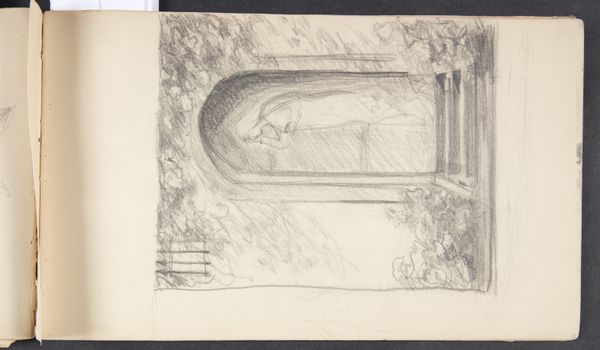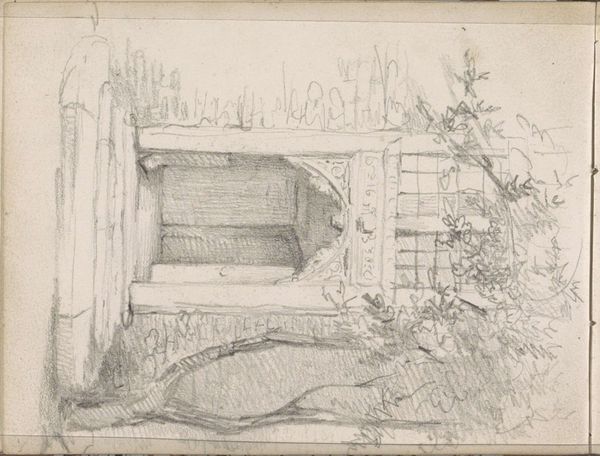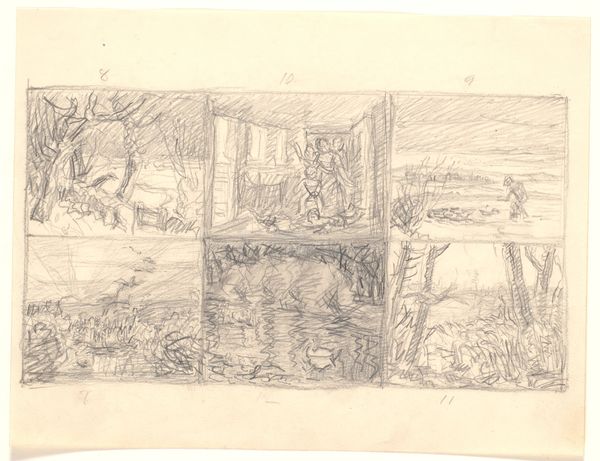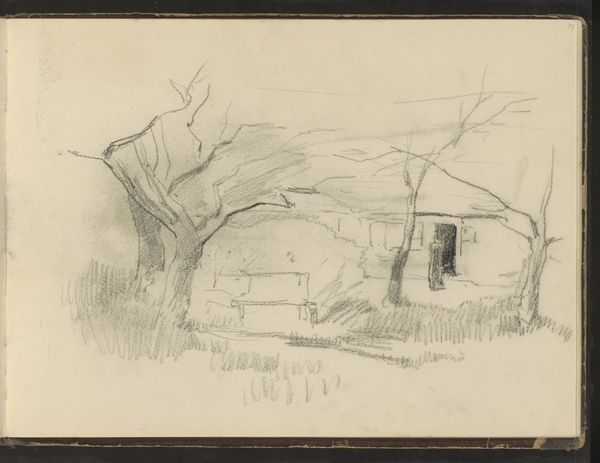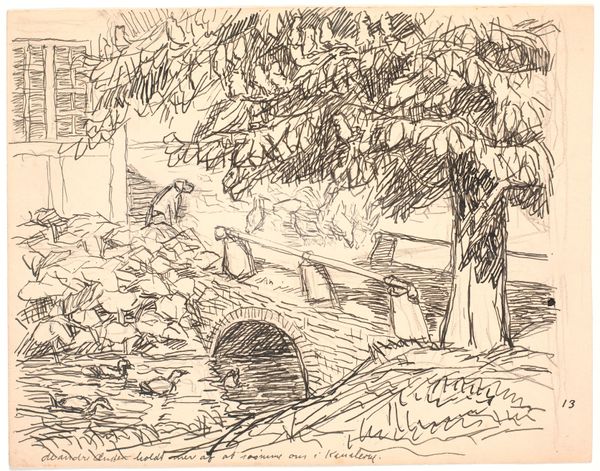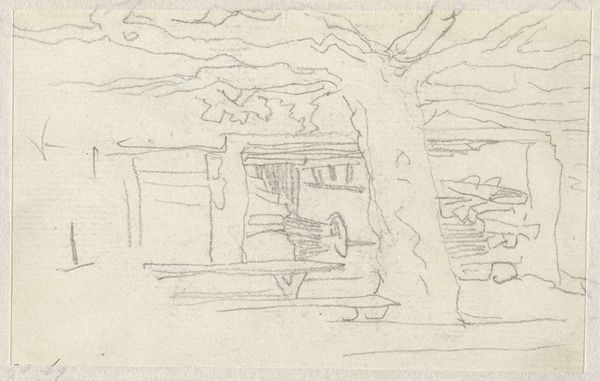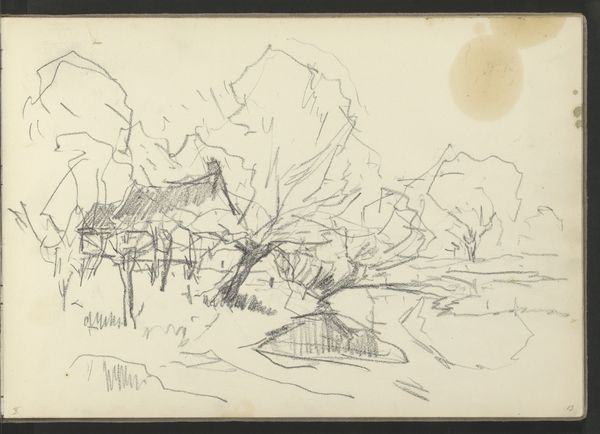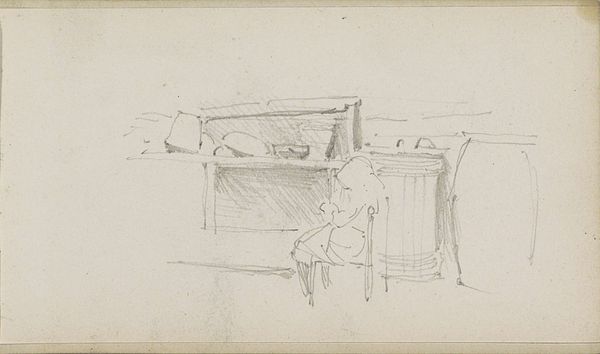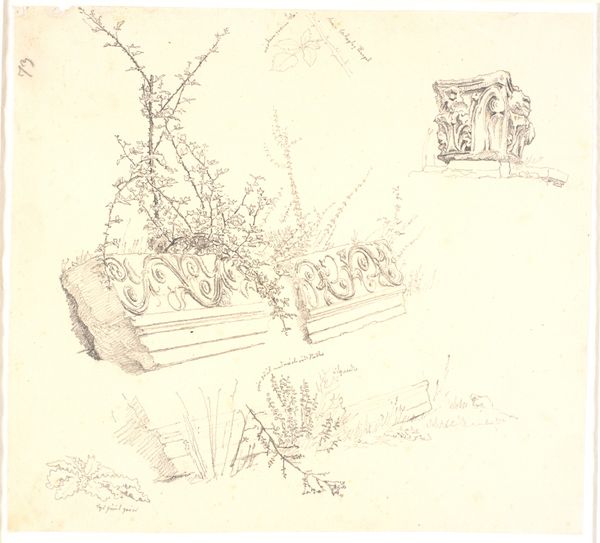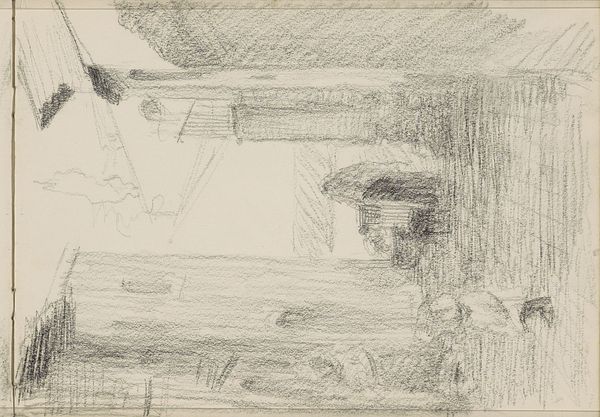
drawing, pencil, graphite
#
drawing
#
pencil sketch
#
landscape
#
forest
#
pencil
#
graphite
#
realism
Copyright: Rijks Museum: Open Domain
Curator: Well, here we have Willem Witsen's "Landscape with a Wooden Building in Amerongen," probably from 1878. It's currently housed in the Rijksmuseum. Editor: It feels wonderfully desolate, doesn't it? That small, stark building surrounded by a dark forest. There's something quite unsettling about its simplicity, like a memory fading at the edges. Curator: Yes, there is that somber feeling. Witsen renders the building with such economy—mostly straight lines that create very simple shapes. He’s chosen just pencil and graphite, typical of studies like this one, really zeroing in on capturing the light. Editor: The social context of landscape art then, too—often, especially in more formalized oil paintings, we see landscapes emphasizing grandeur, possession, almost an ownership over the land. This, by contrast, feels like an acknowledgement of the precariousness of human habitation in the face of nature, like it is being reclaimed. Curator: I think it's interesting how he uses the texture of the graphite to convey different qualities of light and shadow. There’s a soft glow on the front of the building and almost a velvet darkness within. It's so evocative for a seemingly simple drawing. It invites a meditative stillness. Editor: And thinking of labor, right? Who built this building, who used it, for what purposes? It's positioned so ambiguously, neither celebrated nor condemned, simply presented as another layer of human impact. We should consider that even in 1878, rapid industrialization in Europe brought new scrutiny to land usage and distribution of resources. The sketch asks the viewer, I think, to contend with our place in the landscape and its consequences. Curator: Right, you feel that history—you feel time pressing in. But the way it is done is what interests me. He achieves all of this with subtle strokes, not grand pronouncements. It’s understated, pensive, and that's why I find myself returning to it. Editor: Exactly. It offers, then, a really potent reflection on the uneasy tensions between progress and preservation, human labor, and the dominance of nature. It leaves one pondering. Curator: Yes, it really does stay with you. I see the little building now almost like a marker... Editor: A point of inquiry.
Comments
No comments
Be the first to comment and join the conversation on the ultimate creative platform.
